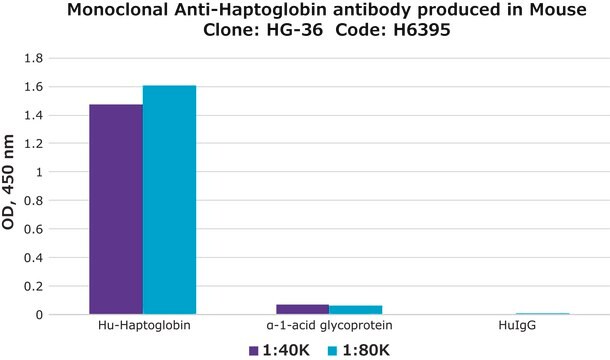SAB4200792
Anti-β-Tubulin IV antibody, Mouse monoclonal
clone ONS.1A6, purified from hybridoma cell culture
Synonyme(s) :
Anti-TUBB4
About This Item
Produits recommandés
Source biologique
mouse
Niveau de qualité
Forme d'anticorps
purified from hybridoma cell culture
Type de produit anticorps
primary antibodies
Clone
ONS.1A6, monoclonal
Forme
buffered aqueous solution
Poids mol.
~55 kDa
Espèces réactives
chicken, bovine, rat, mouse, human
Technique(s)
ELISA: suitable
immunoblotting: 10-20 μg/mL using human breast cancer MCF7 cell line.
immunofluorescence: 5-10 μg/mL using human foreskin Hs68 cells.
immunohistochemistry: suitable
Numéro d'accès UniProt
Conditions d'expédition
dry ice
Température de stockage
−20°C
Modification post-traductionnelle de la cible
unmodified
Informations sur le gène
human ... TUBB(203068)
mouse ... Tubb3(22152)
Description générale
Immunogène
Application
Immunofluorescence: a working concentration of 5-10 μg/mL is recommended using human foreskin Hs68 cells.
Forme physique
Autres remarques
Vous ne trouvez pas le bon produit ?
Essayez notre Outil de sélection de produits.
Code de la classe de stockage
10 - Combustible liquids
Classe de danger pour l'eau (WGK)
WGK 3
Point d'éclair (°F)
Not applicable
Point d'éclair (°C)
Not applicable
Certificats d'analyse (COA)
Recherchez un Certificats d'analyse (COA) en saisissant le numéro de lot du produit. Les numéros de lot figurent sur l'étiquette du produit après les mots "Lot" ou "Batch".
Déjà en possession de ce produit ?
Retrouvez la documentation relative aux produits que vous avez récemment achetés dans la Bibliothèque de documents.
Notre équipe de scientifiques dispose d'une expérience dans tous les secteurs de la recherche, notamment en sciences de la vie, science des matériaux, synthèse chimique, chromatographie, analyse et dans de nombreux autres domaines..
Contacter notre Service technique








